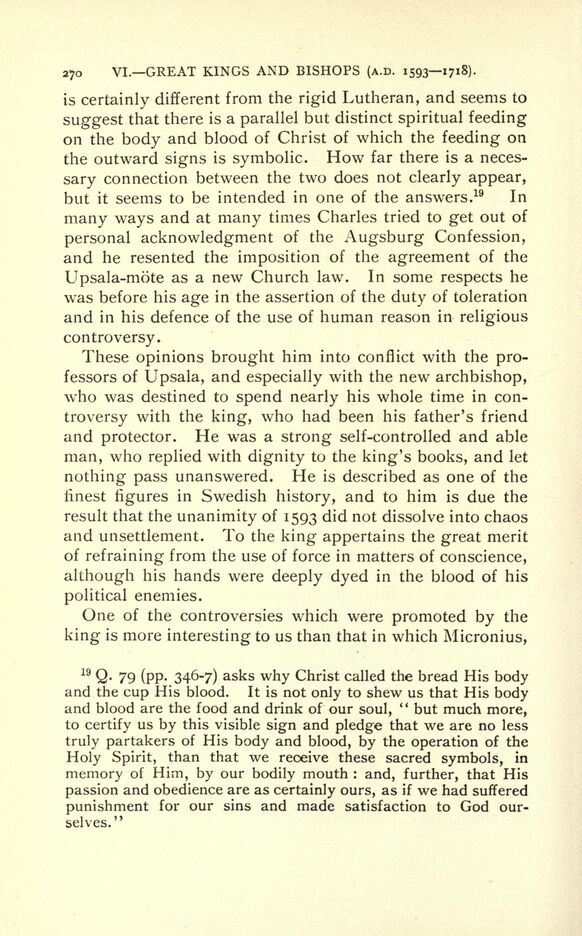
Full resolution (JPEG) - On this page / på denna sida - VI. From the Upsala-möte to the death of Charles XII. The Great Kings and the Great Bishops (1592—1718 A.D.)

<< prev. page << föreg. sida << >> nästa sida >> next page >>
Below is the raw OCR text
from the above scanned image.
Do you see an error? Proofread the page now!
Här nedan syns maskintolkade texten från faksimilbilden ovan.
Ser du något fel? Korrekturläs sidan nu!
This page has never been proofread. / Denna sida har aldrig korrekturlästs.
270 VI. GREAT KINGS AND BISHOPS (A.D. 15931718).
is certainly different from the rigid Lutheran, and seems to
suggest that there is a parallel but distinct spiritual feeding
on the body and blood of Christ of which the feeding on
the outward signs is symbolic. How far there is a neces
sary connection between the two does not clearly appear,
but it seems to be intended in one of the answers.19
In
many ways and at many times Charles tried to get out of
personal acknowledgment of the Augsburg Confession,
and he resented the imposition of the agreement of the
Upsala-mote as a new Church law. In some respects he
was before his age in the assertion of the duty of toleration
and in his defence of the use of human reason in religious
controversy.
These opinions brought him into conflict with the pro
fessors of Upsala, and especially with the new archbishop,
who was destined to spend nearly his whole time in con
troversy with the king, who had been his father s friend
and protector. He was a strong self-controlled and able
man, who replied with dignity to the king s books, and let
nothing pass unanswered. He is described as one of the
finest figures in Swedish history, and to him is due the
result that the unanimity of 1593 did not dissolve into chaos
and unsettlement. To the king appertains the great merit
of refraining from the use of force in matters of conscience,
although his hands were deeply dyed in the blood of his
political enemies.
One of the controversies which were promoted by the
king is more interesting to us than that in which Micronius,
19
Q- 79 (PP- 346-7) asks why Christ called the bread His body
and the cup His blood. It is not only to shew us that His body
and blood are the food and drink of our soul,
"
but much more,
to certify us by this visible sign and pledge that we are no less
truly partakers of His body and blood, by the operation of the
Holy Spirit, than that we receive these sacred symbols, in
memory of Him, by our bodily mouth :
and, further, that His
passion and obedience are as certainly ours, as if we had suffered
punishment for our sins and made satisfaction to God our
selves."
<< prev. page << föreg. sida << >> nästa sida >> next page >>